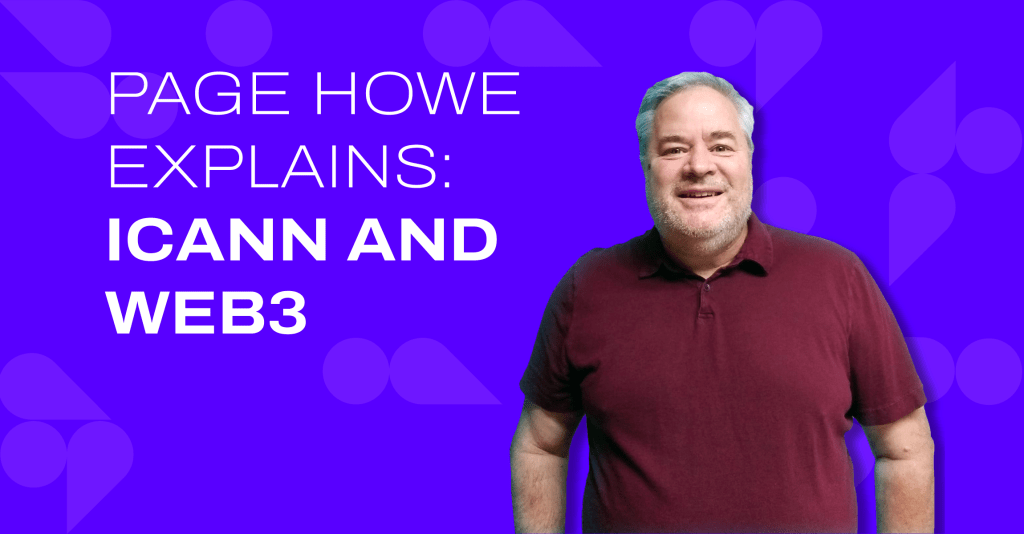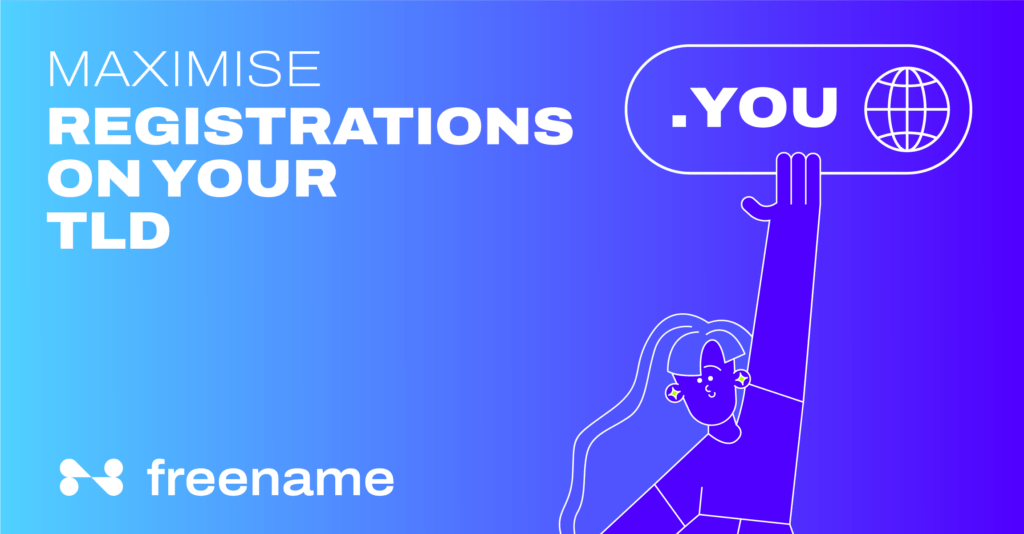Page Howe Explains the Dynamics Between Web3 and ICANN

In a recent podcast interview with industry expert Page Howe, renowned for his extensive domain investment experience, we delved deep into the impact of Web3 on domain dynamics and the role of ICANN in this shifting digital terrain. In this blog post, we distill the essential takeaways from that conversation, shedding light on the intersection of Web3 and ICANN and its implications for domain investors, registrars, and businesses.
Read on to learn more about Web3 and traditional domain dynamics as Howe shares his valuable insights and expertise in domain investment.
Understanding Web3 Domains: Page Howe’s Insightful Advice
In the midst of the London Domain Summit buzz, Page Howe emphasized the significance of taking the time to truly comprehend what Web3 domains are before passing judgment on them.
He openly acknowledged that Web3 domains may not be everybody’s cup of tea. He also stated that prospective investors and enthusiasts should not rush to judgment without fully understanding what Web3 is and its future implications. Instead, he encouraged a patient and open-minded approach to grasp the essence of crypto domains.
Navigating the Domain Landscape: ICANN vs. Web3 Domains
In the live broadcast, Howe clearly explains the difference between traditional domains regulated by ICANN vs. the decentralized, blockchain-based Web3 domains.
ICANN domains, he notes, are characterized by a controlled environment, epitomizing bureaucracy and stability. While this control may be necessary for ensuring the accessibility and fairness of the public internet, it can be limiting for those seeking quick, innovative ventures. On the other hand, due to their decentralized nature, Web3 domains offer agility and capacity for rapid action. Howe’s perspective suggests they may be a haven for those with boundless energy, passion, and a desire to build thriving online communities.
The key takeaway is that the choice between ICANN and Web3 domains isn’t binary nor mutually exclusive. Howe believes that both can coexist and cater to different needs. As we move forward, we must recognize the evolving landscape as ICANN’s dominance might wane, and the potential for Web3 domains could rise.
Whether you opt for the traditional strength of ICANN or the dynamic energy of Web3 domains, understanding your domain landscape is the first step toward making an informed decision.
Web2 and Web3 Domain Investment Insights
When asked if he invests more in Web3 domains than traditional domains, Howe stated that he still invests significant time and money in Web2 domains. He further explains that the traditional domain ecosystem is already well established and stable, and the internet is currently in Web2.
On the other hand, as Web3 is gradually gaining traction, these domains are still much cheaper than Web2 domains. So, while he is highly interested and actively investing in Web3, much of his time and money is still invested in Web2.
This insight from Howe highlights that there is no need to choose one side and that investors can strategically dabble in both Web2 and Web3 domains.
ICANN’s TLD Release Cycle
Howe provided intriguing insights into ICANN’s domain release cycle and the evolving landscape of domain registrations.
He revealed that ICANN’s domain release cycle has historically occurred approximately every 10 years. He traces this pattern back to the 1990s when ICANN initiated the system. In 2002, they introduced a test bed with more TLDs, followed by another round in 2014 when approximately 2000 TLDs were introduced. The next significant release is slated for 2026, with the possibility of domains becoming available at any time.
However, he also stated that purchasing these new TLDs is complicated and arduous, and they cost a fortune. If one could go through the entire process and have the financial resources to invest large sums in such TLDs, then it’s an excellent investment. However, that isn’t a viable option for all investors, and that’s where Web3 comes in as a better, more cost-effective means of buying and owning TLDs.
How Web3 and ICANN Affect Each Other
In this thought-provoking discussion, Howe delved into the intricate relationship between Web3 and ICANN, shedding light on how these two domains impact each other.
Web3’s Influence on ICANN
Howe highlighted the growing interest in Web3 domains and how they have stirred conversations within ICANN. The desire for personalized top-level domains (TLDs) in Web3 has raised questions about ICANN’s role in granting these domains. ICANN’s recent decision to open a new round of TLD applications by 2026 signals a response to the changing landscape.
Navigating Web3
He explains how individuals and companies can navigate Web3. Speculating in areas of domain names that ICANN may not readily approve, such as one and two-character TLDs, emojis, geographic terms, and combinations of letters and numbers, might yield success. This reflects the evolving nature of the domain space.
The Future of ICANN
Howe presents two potential paths for ICANN – ignore Web3 or integrate key features of Web3 into traditional domains to stay competitive and relevant. He anticipates that integration if it happens, may not occur until 2027 or 2028. The discussion underscores the need for ICANN to adapt to changing dynamics while acknowledging its role in maintaining the internet’s stability.
In this rapidly evolving digital landscape, understanding the intricate interplay between Web3 and ICANN is crucial for domain investors, registrars, and businesses seeking to secure their digital identities. As Web3 continues to reshape the internet and ICANN adapts to these changes, staying informed and strategically positioning your digital assets will be essential for anyone navigating this dynamic terrain.









